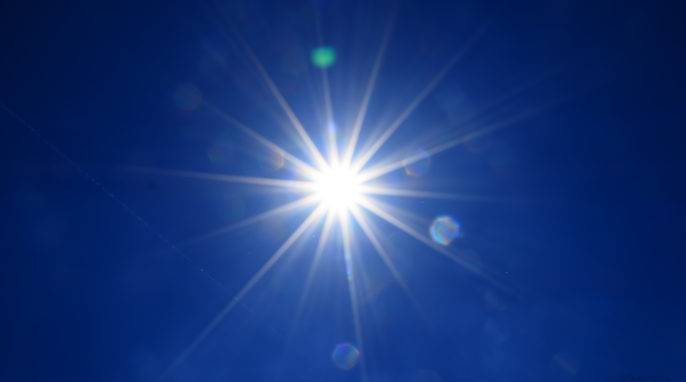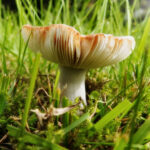Hot Towns, Urban Heat Islands
In countries where air conditioning is not as widespread, extreme heat waves may kill even more. The 2003 heat wave in Europe killed as many as 30,000 people. There were 14,800 deaths that year in France alone [4]. Satellite measurements (LANDSAT) confirmed that nighttime temperatures in Paris were 4°C higher than temperatures outside Paris at the time. Multiple hot days and hot nights in a row are deadly because vulnerable people cannot recover adequately from the heat.
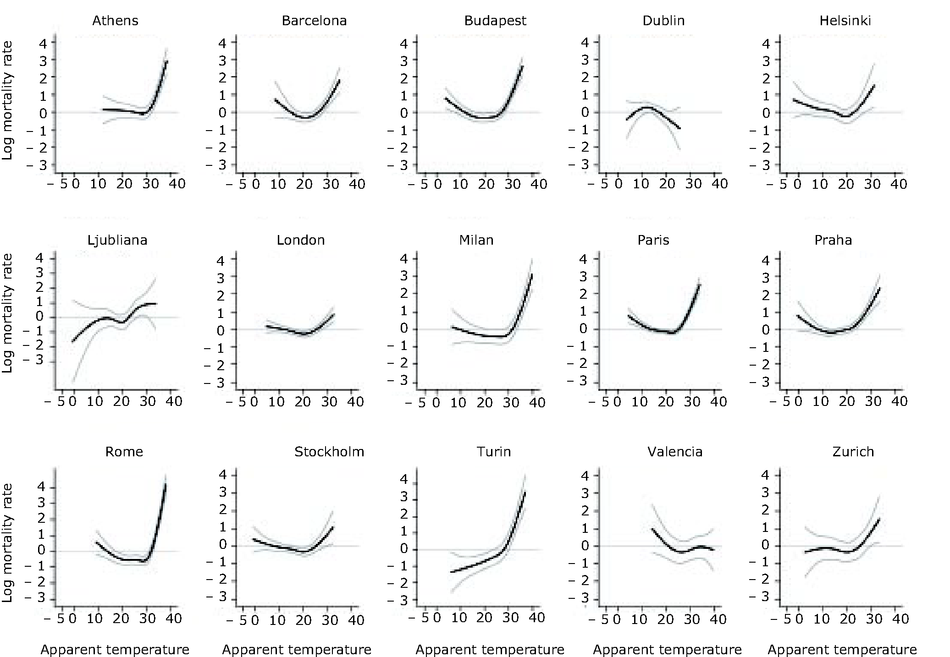

Reducing Effects of Urban Heat Islands
Absorption of infrared (IR) radiation by covered surfaces in cities is the key factor in producing urban heat islands. One way to combat this effect is to choose materials with a high reflectivity (albedo). Urban areas offer three large opportunities for adding more reflective surfaces: An analysis of Sacramento showed that 28 percent of the city area consists of rooftops, 16 percent of streets, and 14 percent of parking lots and driveways. This means that 58 percent of Sacramento’s surface area absorbs heat during the day and releases it slowly at night. Chicago, Houston, Sacramento, Baton Rouge, and Salt Lake City were also analyzed and had similar results. Scientists estimate that these cities have the potential to modify the urban albedo over 18 percent of the surface area [5].
Smarter Use of Building Materials
Using white surface coatings for roofs and walls would increase reflectivity from 5 to 10 percent for lighter roofs and as much as 50 to 80 percent for darker roofs. Reflecting more infrared energy away from the building keeps temperatures lower. In fact, the temperature difference between a dark roof and a reflective roof may be as much as 33°C.
Pavements and parking lots can be constructed with light-colored materials. Mixing light-colored stone aggregates into asphalt or switching to concrete improves the reflection of infrared radiation. Some of this reflected radiation will strike nearby buildings, which may require reflective glass windows or additional insulation.
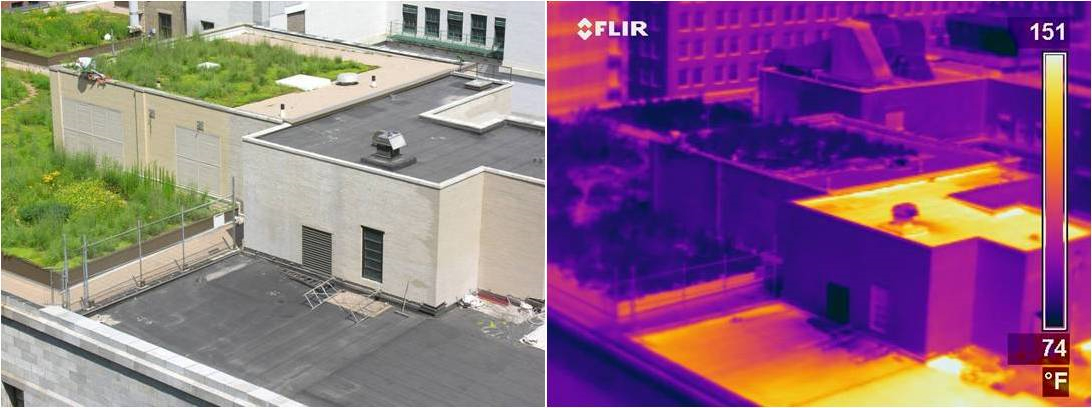

Urban Heat Islands: Trees to the Rescue
Another option for cooling roofs is to cover them with trees and other types of vegetation. Chicago’s City Hall is a well-documented example. Green roofs are more complex to build and maintain than roofs simply coated with highly reflective surfaces, but the vegetation also improves overall air quality and reduces runoff.
A study in Mexico City concluded that temperatures could be reduced 1°C by planting trees. Planting either 63 river red gum trees (Eucalyptus camaldulensis) or 24 American sweet gum trees (Liquidambar styraciflua) per hectare (10,000 square meters) achieves this cooling effect. Shade for specific buildings can be further optimized by planting trees or vines on the east or west sides, blocking low-angle rays that contribute to heating buildings in the morning or afternoon.
The type of tree canopy and the suitability of the growing climate are important factors in deciding which trees to plant. Trees provide a simple and cost-effective method to reduce UHI effects. Trees that lose their leaves (deciduous trees) also have the advantage of not blocking the sun during winter. This preserves the winter warming effect and reduces energy used for heating.
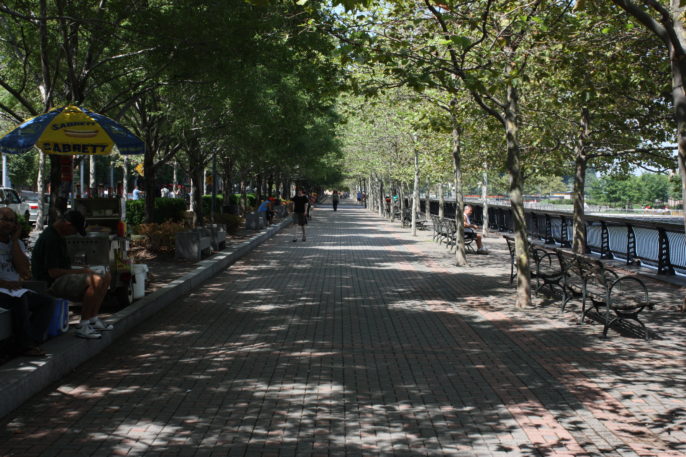

Harnessing the Sun
Another option for controlling UHIs is using solar power panels, which also reduce harmful emissions from fossil fuels. Thermal panels reduce heating costs, while photovoltaic panels generate electricity. Solar panels also cool buildings by shading them from infrared radiation.
Researchers estimated that solar panels would result in 3 percent more wintertime energy usage in Paris. A 12 percent summertime reduction in air conditioning would more than offset the winter increase. Additionally, solar panels would reduce the nighttime UHI effect by 0.3°C.
A research group simulated large-scale deployment of solar panels [6]. They found that global temperatures would decrease by an average 0.04°C. Their simulations also uncovered possible changes in regional precipitation. Nevertheless, the researchers concluded that using solar panels is better than using more fossil fuels. Burning fossil fuels is projected to increase global temperatures 1°C to 3°C by 2100. The results of the study will help policy makers reduce fossil fuel emissions with minimal side effects on precipitation.
A Real-Life Game of SimCity ™
Policy makers and city planners have multiple options to combat UHI. Roofs account for up to 40 percent of UHI effects. They can easily be improved with solar-reflective materials, green roofs, or solar panels. Solar panels reduce both UHI heat effects and fossil fuel emissions. Vegetation, especially trees, reduces the summertime UHI heat effects through a combination of shade and evaporation. Vegetation also has a positive effect on improving air quality and reducing runoff.
Additional Information
- United Nations, Department of Economic and Social Affairs, Population Division (2014). World Urbanization Prospects: The 2014 Revision, Highlights (ST/ESA/SER.A/352).
Urban Populations
North America: 82%
Latin America and the Caribbean: 80%
Europe: 73%
Asia: 48% (projected to increase to 64% by 2050)
Africa: 40% (projected to increase to 56% by 2050)
- Practical Issues for Using Solar-Reflective Materials to Mitigate Urban Heat Islands, Lawrence Berkeley National Laboratory, Bretz et al. 1997
- Impact of solar panels on global climate, Aixue Hu et al., Nature, November 2015
References
Energy Savings for Heat-Island Reduction Strategies in Chicago and Houston (Including Updates for Baton Rouge, Sacramento, and Salt Lake City), Lawrence Berkeley National Laboratory, Konopacki et al. 2002
Passive cooling techniques through reflective and radiative roofs in tropical houses in Southeast Asia: A literature review, Universiti Sains Malaysia, Al-Obaidi et al. June 2014
GotScience.org translates complex research findings into accessible insights on science, nature, and technology. Help keep GotScience free: Donate or visit our gift shop. For more science news subscribe to our weekly digest.

